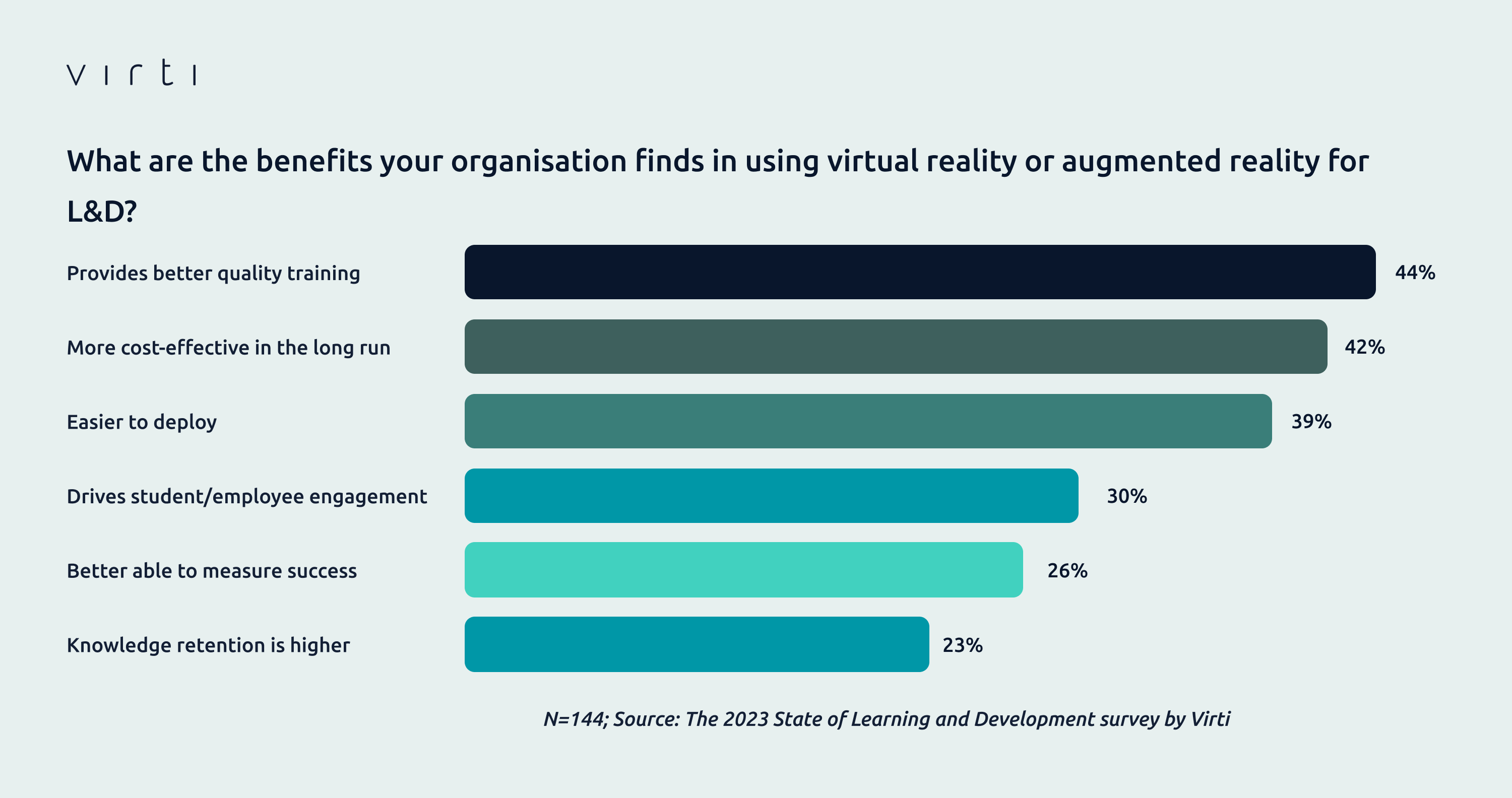The Top Training Benefits of Virtual and Augmented Reality in L&D
About four in 10 learning and development (L&D) professionals say their organisation uses digitally immersive environments in their training programmes. That’s according to a newly published report based on a survey of 144 UK-based L&D professionals we conducted.

Digital immersion includes emerging learning technologies such as virtual reality (VR) and augmented reality (AR). The survey revealed there is a perception that these technologies are expensive, so we wanted to understand what benefits these forward-thinking trainers see in VR/AR to justify the investment.
We asked just this cohort the following question: “What are the benefits your organisation finds in using virtual reality or augmented reality for L&D?”
Top training benefits of VR and AR in L&D
Survey respondents said the top benefits of digitally immersive training are as follows:
- Quality. 44% said digital immersion provides better quality training;
- Cost-effective. 42% said it is more cost-effective in the long run;
- Deployment. 39% said VR/AR is easier to deploy;
- Higher engagement. 30% said it drives higher student/employee engagement;
- Measurement. 26% said they are better able to measure success; and
- Knowledge retention. 23% said knowledge retention is higher with VR/AR learning tools.
It’s very telling that most respondents who currently use these tools identified cost-effectiveness as a top benefit – trailing only quality. Indeed, whilst there is a higher set-up cost, digitally immersive environments are less expensive over time for several reasons.
Chief among these is that VR/AR provides the ability to remotely scale those high-pressure real-world environments in training – and simuultatinously reduced spend related to time and travel. Second, VR/AR-based training takes less time than traditional e-learning or the classroom to get the same impact. This means employees save time that would otherwise be spent sitting in a class or watching videos. Third, the digital nature often makes it easier to keep course material up-to-date.
Further, there’s substantial research, suggesting that knowledge absorption and knowledge retention tend to be higher with digitally immersive training. Finally, only with VR/AR can L&D collect real-time data and analytics that provide learning insights and objective performance feedback.
There’s more detail in the full report which is available for download here:
The 2023 State of Learning and Development Report

